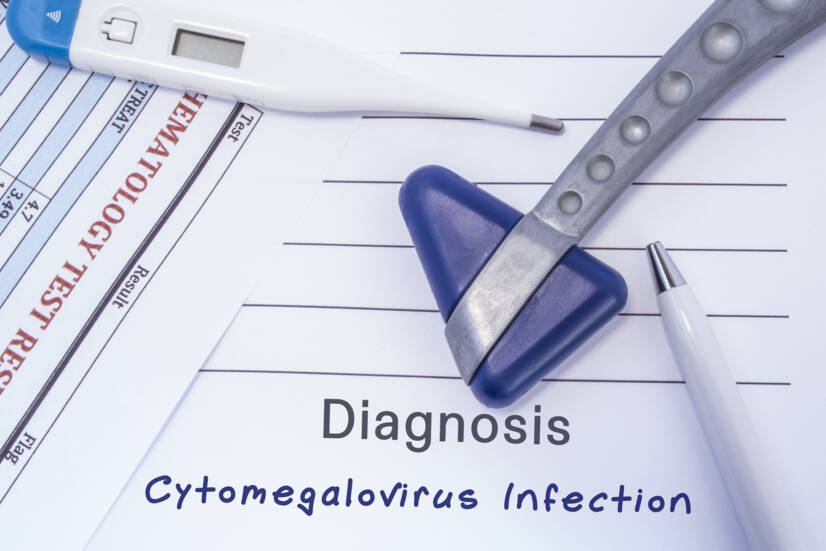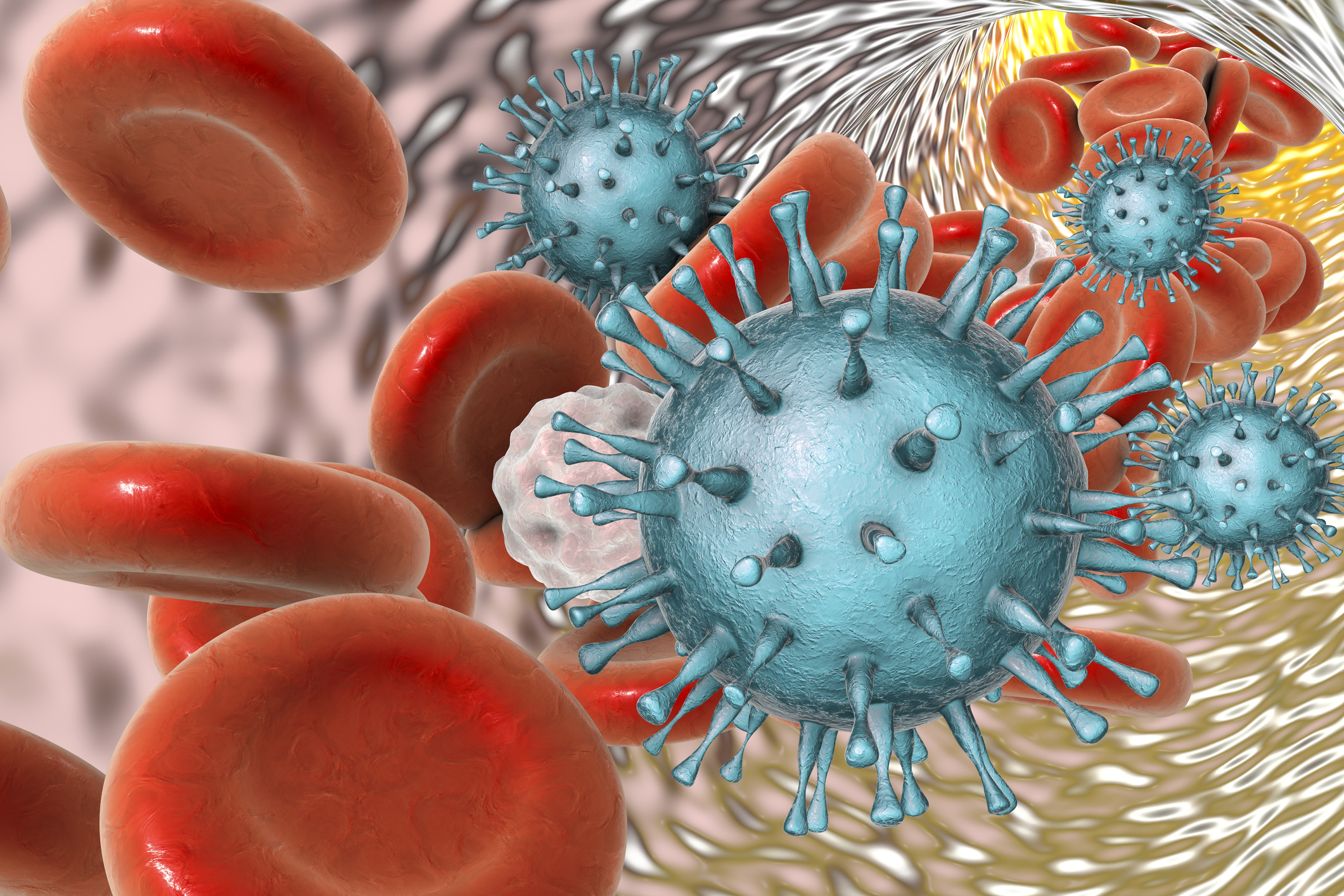- solen.cz - Congenital cytomegalovirus infection: diagnosis and therapy
- newslab.sk - Infection caused by cytomegalovirus - diagnosis and therapy. RNDr. Daniela Hučková, RNDr. Katarína Kollárová. Medirex, a. s., Bratislava
- prolekare.cz - Cytomegalovirus infection and the liver
- prolekare.cz - Cytomegalovirus infections in intensive care: to treat or ignore?
- prolekare.cz - Use of IgG antibody avidity tests in the diagnosis of cytomegalovirus infection
- casopisvnitrnilekarstvi.cz - Cytomegalovirus and polyomavirus infection after kidney transplantation
- prolekare.cz - Cytomegalovirus infections in newborns and children
- mayoclinic.org - Cytomegalovirus (CMV) infection
- sciencedirect.com - Cytomegalovirus
- pubmed.ncbi.nlm.nih.gov - History of cytomegalovirus
Cytomegalovirus infection: what it is, causes, symptoms and CMV in children

Cytomegalovirus is an unknown virus to many. Many women only learn about it during pregnancy. How is it dangerous?
Most common symptoms
- Malaise
- Chest pain
- Tremors
- Abdominal Pain
- Headache
- Sore Throat
- Joint Pain
- Limb pain
- Nerve pain
- Eye Pain
- Muscle Pain
- Sensitivity to light
- Spirituality
- Cramps in the abdomen
- Nausea
- Diarrhoea
- Fever
- Indigestion
- Defence
- Swelling of the limbs
- The Island
- Tingling
- Blindness
- Fatigue
- Deterioration of vision
- Winterreise
- Yellowish skin
- Accelerated heart rate
- Enlarged lymph nodes
- Liver enlargement
- Vomiting
Characteristics
Cytomegalovirus infection is considered one of the risk factors for neonatal morbidity. Together with toxoplasmosis, rubella and herpes virus, it is one of the most common causes of congenital infections.
Cytomegalovirus can cause various developmental defects in newborns. In immunocompromised patients (e.g. cancer patients, HIV-positive persons), cytomegalovirus infection is a common cause of fatal complications.
Did you know that....
For every 150 newborns, there is 1 baby with congenital cytomegalovirus infection. Cytomegalovirus infection is considered the most common congenital viral infection. One in 750 newborns will suffer permanent damage as a result of cytomegalovirus infection.
The incidence of cytomegalovirus infection is worldwide. Cytomegalovirus infection affects 60 to 90% of adults.
The highest incidence of cytomegalovirus infection is in developing countries, due to low socioeconomic levels and higher population density. In developing countries, cytomegalovirus is found in children as young as 5 years of age.
It often occurs in children in a closed collective (kindergarten, school).
Increased sexual activity is a risk factor for adolescents. As a result, mothers under the age of 20 are at greater risk of congenital cytomegalovirus infection in their children.
The incidence of cytomegalovirus infection increases with age.
Prevalence:
47% in persons aged 10-12 years
68% in persons aged 15-35 years
81% in persons aged 36-60 years
Affects women more often than men.
African Americans and Asians are approximately 20-30% more likely to have cytomegalovirus than other races.
Some history...
In 1881, German Professor Ribbert first described cells infected with cytomegalovirus. In 1921, Goodpasture and Talbert first suggested that cytomegaly could be caused by a virus.
In 1960, Weller, Rowe and Smith isolated the virus from human salivary glands. In the same year, Weller and his colleagues proposed the name cytomegalovirus.
How is cytomegalovirus transmitted?
In most cases, cytomegalovirus is spread by prolonged close contact.
The shedding of the virus can be intermittent or continuous. The duration of shedding and the amount of virus shed can vary.
In adults, it may take several days to months. In children, it may take several months to years.
Viral particles spread into the environment:
- saliva
- urine
- faeces
- cervical secretions
- ejaculate
- breast milk
- other bodily secretions
Mother-to-child transmission can occur during pregnancy or childbirth. One way of transmission from mother to child is breastfeeding. Another way of transmission is organ transplantation or blood transfusion.
Sick people or carriers of the virus are the source of infection.
The virus is activated when the immune system is weakened. It is insidious in that clinical symptoms may not be visible.
The incubation period usually lasts 9 to 60 days.
Methods of transmission:
- Mother to child - transplacentally, at birth, by breastfeeding.
- horizontal transmission - through body fluids (e.g. saliva, urine, cervical secretions)
- other means of transmission - organ transplantation, blood transfusion

Causes
Cytomegalovirus is considered the largest and most complex human virus.
It is classified as a DNA virus. It belongs to the herpes viruses. They are considered the most widespread pathogens in the human population.
Herpes viruses have the ability to go into a latent phase (hidden, not outwardly manifested).
They are activated when the organism is weakened.
Cytomegalovirus behaves in the human body similarly to other herpes viruses. Once the virion (the building block of the virus) enters the cell, parts of the virion are rapidly transferred to the cell nucleus. There they multiply (replicate). Replication is relatively slow.
Symptoms
The first infection usually takes place in childhood and is usually without symptoms. The type of clinical signs depends on the patient's immune status.
In some patients, the disease may progress without specific symptoms:
- fever
- swollen lymph nodes
- fatigue
- weakness
- muscle and joint pain
- lack of appetite
- infectious mononucleosis syndrome
According to the way of acquiring the infection, the symptoms can be divided as follows:
- Congenital cytomegalovirus infection
The highest risk of transmission from mother to child during pregnancy is if the mother had her first infection (primoinfection) during pregnancy.
The first half of pregnancy is considered to be the highest risk period.
Approximately 10 to 15% of infected babies have symptoms after birth.
Did you know that...
A newborn should be examined within 21 days after birth. After this time, it is difficult to distinguish congenital infection from acquired infection.
In most cases, there are no signs of infection immediately after birth.
Between 5 and 15 % of children with cytomegalovirus develop various forms of neurological disorders with psychomotor retardation, deafness or disruption of one of the endocrine glands (e.g. pituitary, adrenal, thyroid) at a later stage of the disease.
Symptoms of congenital infection include:
- premature birth
- low birth weight
- CNS involvement - microcephaly (disproportionately small head), hydrocephalus (brain discharge), calcification (calcification)
- eye disorders - corneal inflammation (keratitis), iritis and retinitis (chorioretinitis), cataract (cataracts), optic neuritis
- enlargement of the liver and spleen (hepatosplenomegaly)
- anaemia
- pneumonia
- jaundice
- thrombocytopenia

- Acquired cytomegalovirus infection
Acquired infection is asymptomatic in most cases.
The exceptions are cases where the infection occurs during birth or during breastfeeding of premature newborns.
The disease manifests itself in such children in a similar way as:
- Hepatitis
- lymphadenopathy (enlarged lymph nodes)
- pneumonia (pneumonia)
- meningitis (inflammation of the meninges)
You might also be interested in:
In adolescents, the first infection with cytomegalovirus manifests itself similarly to mononucleosis. The main symptoms include fever and general malaise. In the blood count, atypical lymphocytosis and elevated liver tests are detected.
In practice, it is quite difficult to distinguish this infection from mononucleosis.
You may also be interested in:
- Cytomegalovirus infection in immunocompromised patients
Cytomegalovirus infection in these patients can manifest as pneumonia (it has up to 90% mortality after bone marrow transplantation), gastrointestinal tract disease and cytomegalovirus retinitis.
In immunocompromised patients (AIDS patients, patients taking immunosuppressants), both the first infection and cytomegalovirus reactivation can have a severe course or even be life-threatening.
Diagnostics
The following methods are used to diagnose cytomegalovirus infection:
- Serological testing - the most commonly used method.
- Direct detection of viral DNA - the gold standard in the diagnosis of cytomegalovirus infection
- Culture - highly specific detection of the virus in various biological materials
- Histopathological examination - the most specific examination, confirms direct tissue involvement
- Blood count - blood count with differential white blood cell count is an integral part of the diagnosis of cytomegalovirus infection
What do the abbreviations in the results mean?
How to understand the results?
The abbreviations and their explanations are given in the table below
| TEST RESULT | EXPLANATION |
| IgG negative IgM negative |
|
| IgG positive IgM positive |
|
| IgG positive IgM negative |
|
| Avidity IgG against CMV |
|
Before the birth of the child, the diagnosis is made as follows:
First, the baby and its development are monitored by ultrasound. If justified, cord blood (cordocentesis) or amniotic fluid (amniocentesis) is collected.
The next step is virus isolation, haematological and immunological tests.
How is diagnosis in newborns carried out?
In newborns, specific antibodies (IgM and IgA), cytomegalovirus DNA, viral load and virus isolation are determined.
In the next step, brain ultrasound, CT (computed tomography) and MRI (magnetic resonance imaging), lumbar puncture, hearing and eye examination and neurological examination are performed.
Course
In most cases, the first infection (primoinfection) with cytomegalovirus is asymptomatic. Sometimes fever and tonsillitis may occur.
Primoinfection is followed by a latent (hidden) phase. In this phase, the virus survives in macrophages.
Cytolegalovirus persists latently in the person (host) throughout life. Only occasionally does it resume activity. Usually no symptoms appear.
In immunocompromised patients, the situation is quite different. The disease is manifested by fever, low white blood cell count (leukopenia) and organ damage.
Target organs include the lungs, central nervous system (CNS), liver and gastrointestinal tract. In most cases, there is a resurgence of latent cytomegalovirus activity.
What types of cytomegalovirus infection are known?
- Primary - A person comes into contact with cytomegalovirus for the first time. The person has not developed any antibodies.
- Recurrent - The person has had a cytomegalovirus infection in the past and when the immune system weakens, the virus reactivates. In this type, symptoms of the disease appear only sporadically. The organism has already developed antibodies from the previous first infection.
- Reinfection - A new infection that is caused by a different strain of cytomegalovirus.

How it is treated: Cytomegalovirus infection
Treatment of cytomegalovirus: medication, diet, diet
Show moreCytomegalovirus infection is treated by
Other names
Interesting resources
Related










